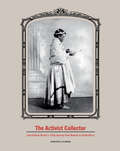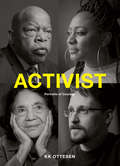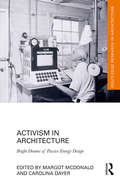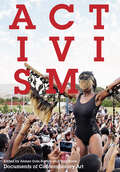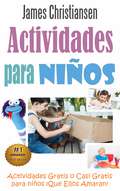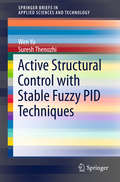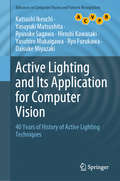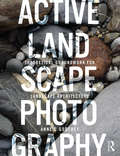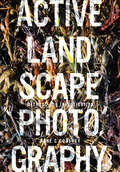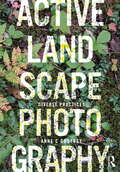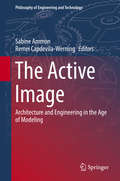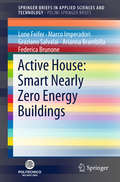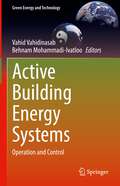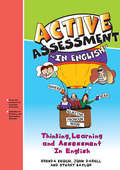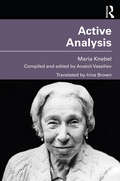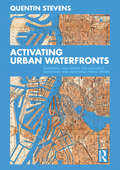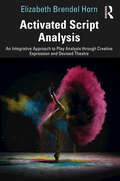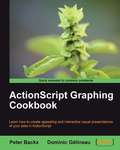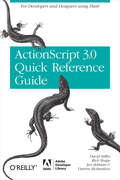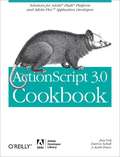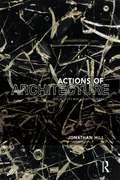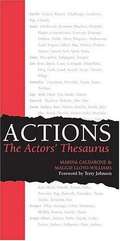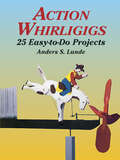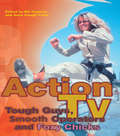- Table View
- List View
The Activist Collector: Lida Clanton Broner’s 1938 Journey from Newark to South Africa
by Christa Clarke“After twenty-eight years of desire and determination, I have visited Africa, the land of my forefathers.” So wrote Lida Clanton Broner (1895–1982), an African American housekeeper and hairstylist from Newark, New Jersey, upon her return from an extraordinary nine-month journey to South Africa in 1938. This epic trip was motivated not only by Broner’s sense of ancestral heritage, but also a grassroots resolve to connect the socio-political concerns of African Americans with those of black South Africans under the segregationist policies of the time. During her travels, this woman of modest means circulated among South Africa’s Black intellectual elite, including many leaders of South Africa’s freedom struggle. Her lectures at Black schools on “race consciousness and race pride” had a decidedly political bent, even as she was presented as an “American beauty specialist.” How did Broner—a working class mother—come to be a globally connected activist? What were her experiences as an African American woman in segregated South Africa and how did she further her work after her return? Broner’s remarkable story is the subject of this book, which draws upon a deep visual and documentary record now held in the collection of the Newark Museum of Art. This extraordinary archive includes more than one hundred and fifty objects, ranging from beadwork and pottery to mission school crafts, acquired by Broner in South Africa, along with her diary, correspondence, scrapbooks, and hundreds of photographs with handwritten notations. Published by the Newark Museum. Distributed worldwide by Rutgers University Press.
Activist: Portraits of Courage
by KK OttesenA speech on the radio. A high school literature class. A promise made to a mother.Activism begins in small ways and in unexpected places. In this inspiring book, over forty activists from Billie Jean King to Senator Bernie Sanders and Grover Norquist to Al Sharpton recount the experiences that sparked their journeys and share the beliefs that keep them going. These are citizens who met challenge with action. Their visions for peace, equality, and justice have reshaped American society—from voting to reproductive rights, and from the environment to the economy.• Brings together multiple generations from different (sometimes opposite perspectives)• Features KK Ottesen's luminous photographs revealing passion, purpose and optimism• Powerful narratives that collective remind us that anyone can take the future into their own handsFans of 1960Now, Martha Rosler: Irrespective, and Charles White: A Retrospective will love this book. This book is perfect for:• Activists, old and new• Politically engaged readers • Photography fans• Millennials
Activism in Architecture: Bright Dreams of Passive Energy Design (Routledge Research in Architecture)
by Margot McDonald Carolina DayerThis edited collection gathers contributions from a diverse range of renowned scholars and professionals to uncover the unique relationship between passive architectural systems and activism. Focusing on the pioneering work of the influential American chemist and inventor, Harold R. Hay (1909–2009), and the environmental awareness events that took hold in the United States during the 1960s and 1970s, the book assembles essays which closely examine Hay's contribution to architecture and the work of those who directly and tangentially were affected by it. The book also offers insights into the role of passive energy design today. Appealing to researchers, architects and students interested in architecture and design technology, Activism in Architecture explores the role of passive environmental inventions as an active agent in shaping socio-political debates.
Activism (Whitechapel: Documents of Contemporary Art)
by Afonso Dias Ramos Tom SnowAn edited collection that addresses the vital intersection of contemporary art and activism in this watershed cultural moment.Activism is a critical point of contention for institutions and genealogies of contemporary art around the world. Yet artists have consistently engaged in activist discourse, lending their skills to social movements, and regularly participating in civil and social rights campaigns while also boycotting cultural institutions and exerting significant pressure on them. This timely volume, edited by Tom Snow and Afonso Ramos, addresses an extraordinary moment in debates over the institutional frameworks and networks of art including large-scale direct actions, as well as a radical rethinking of art venues and urban spaces according to racial, class, or gender-based disparities, including demonstrations against the extractive and exploitative practices of neoliberal accumulation and climate catastrophe.From ACT UP and its affiliate groups since the dawn of the AIDS crisis to the counter-spectacle and street theatrics of the so-called Arab Spring and Occupy, to ongoing protest movements such as Black Lives Matter, Rhodes Must Fall, and Decolonize This Place, activist aesthetics has proven increasingly difficult to define under traditional classifications. Resurgent campaigns for decolonial reckoning, ecological justice, gender equality, indigenous rights and antiracist pedagogies indicate that the role of activism in contemporary art practice urges a critical reassessment. One pressing question is whether contemporary art&’s most radical politics now takes place outside, against, or in spite of, conventional sites of display such as museums, biennials, and galleries.Artists surveyed include: ACT UP, Basel Abbas & Ruanne Abou-Rahme, Allora & Calzadilla, Tania Bruguera, Black Audio Film Collective, Chto Delat, Andrea Fraser, Nan Goldin, Sanja Iveković, Gulf Labor, Amar Kanwar, Leslie Labowitz, Liberate Tate, Sethembile Msezane, Zanele Muholi, Jan Nikolai Nelles & Nora Al-Badri, Decolonize This Place, Michael Rakowitz, Oliver Ressler. Writers include: Dave Beech, Judith Butler, Amílcar Cabral, Elias Canetti, Douglas Crimp, Jodi Dean, Gilles Deleuze, T.J. Demos, Nina Dubrovsky, Süreyyya Evren, Catherine Flood, Matthew Fuller, David Graeber, Gavin Grindon Félix Guattari, Brian Holmes, Carrie Lambert-Beatty, Lucy Lippard, Yates McKee, MTL Collective, Gregory Sholette, Françoise Vergès, Peter Weiss, Eyal Weizman.
Actividades para Niños: Actividades Gratis o Casi Gratis para niños ¡Que Ellos Amaran!
by James Christiansen Salvador Sandoval Sanchez¿Sus hijos este verano se quejan de que "no hay nada que hacer" o "estoy aburrido" ? ¿Necesitas algunas ideas nuevas para mantenerlos entretenidos hasta que la escuela regrese a la sesión? No busque más - esta guía de actividades gratuitas y baratas para niños le ayudará a patear el blues de aburrimiento! Mis hijos son probablemente como el suyo: les encanta estar fuera de la escuela, pero pronto los sonidos de "estoy aburrido" y "no hay nada que hacer" eco a través de nuestra casa y tanto mi esposa y yo anhelamos algo para mantenerlos entretenidos y evitar que comiencen a quejarse. Con esta motivación, he recolectado grandes actividades gratuitas o casi gratuitas para los niños que mis hijos adoran y el suyo también! En este libro aprenderá: 1. Cómo mantener a los preescolares entretenidos y cómo hacerlo economicamente! 2. Divertirse y casi gratis actividades interiores y al aire libre para niños de 6 a 8 años. 3. Cómo divertirse con niños mayores e independientes con un presupuesto 4. Actividades de interior y al aire libre para niños de todas las edades 5. Actividades divertidas con estilo, incluyendo actividades de aprendizaje de niños para niños de todas las edades ¿Necesitas otra razón para comprar este libro? Aquí hay una gran: dono el 5% de los ingresos de las ventas de mis libros a la lectura es fundamental, el más grande y más respetado fonfo de alfabetización para niños sin fines de lucro en América! Detenga las quejas y cure el aburrimiento de hoy. ¡Consiga este libro y consiga algunas grandes ideas para las actividades de los niños !hoy!
Active Structural Control with Stable Fuzzy PID Techniques (SpringerBriefs in Applied Sciences and Technology)
by Wen Yu Suresh ThenozhiThis book presents a detailed discussion of intelligenttechniques to measure the displacement of buildings when they are subjected tovibration. It shows how these techniques are used to control active devicesthat can reduce vibration 60-80% more effectively than widely used passiveanti-seismic systems. After introducing various structural control devices andbuilding-modeling and active structural control methods, the authors proposeoffset cancellation and high-pass filtering techniques to solve some commonproblems of building-displacement measurement using accelerometers. The mostpopular control algorithms in industrial settings, PD/PID controllers, are thenanalyzed and then combined with fuzzy compensation. The stability of thiscombination is proven with standard weight-training algorithms. These conditionsprovide explicit methods for selecting PD/PID controllers. Finally, fuzzy-logicand sliding-mode control are applied to the control of wind-induced vibration. The methods described are supported by reports of experimental studies on atwo-story building prototype. This book is avaluable resource for academic researchers interested in the effects of controland mechatronic devices within buildings, or those studying the principles ofvibration reduction. Practicing engineers working on the design andconstruction of any sort of high-rise or vulnerable building and concerned withthe effects of either wind or seismic disturbances benefit from the efficacy ofthe methods proposed.
Active Lighting and Its Application for Computer Vision: 40 Years of History of Active Lighting Techniques (Advances in Computer Vision and Pattern Recognition)
by Katsushi Ikeuchi Yasuyuki Matsushita Ryusuke Sagawa Hiroshi Kawasaki Yasuhiro Mukaigawa Ryo Furukawa Daisuke MiyazakiThis book describes active illumination techniques in computer vision. We can classify computer vision techniques into two classes: passive and active techniques. Passive techniques observe the scene statically and analyse it as is. Active techniques give the scene some actions and try to facilitate the analysis. In particular, active illumination techniques project specific light, for which the characteristics are known beforehand, to a target scene to enable stable and accurate analysis of the scene. Traditional passive techniques have a fundamental limitation. The external world surrounding us is three-dimensional; the image projected on a retina or an imaging device is two-dimensional. That is, reduction of one dimension has occurred. Active illumination techniques compensate for the dimensional reduction by actively controlling the illumination. The demand for reliable vision sensors is rapidly increasing in many application areas, such as robotics and medical image analysis. This book explains this new endeavour to explore the augmentation of reduced dimensions in computer vision. This book consists of three parts: basic concepts, techniques, and applications. The first part explains the basic concepts for understanding active illumination techniques. In particular, the basic concepts of optics are explained so that researchers and engineers outside the field can understand the later chapters. The second part explains currently available active illumination techniques, covering many techniques developed by the authors. The final part shows how such active illumination techniques can be applied to various domains, describing the issue to be overcome by active illumination techniques and the advantages of using these techniques. This book is primarily aimed at 4th year undergraduate and 1st year graduate students, and will also help engineers from fields beyond computer vision to use active illumination techniques. Additionally, the book is suitable as course material for technical seminars.
Active Landscape Photography: Theoretical Groundwork for Landscape Architecture
by Anne C GodfreyPhotographs play a hugely influential but largely unexamined role in the practice of landscape architecture and design. Through a diverse set of essays and case studies, this seminal text unpacks the complex relationship between landscape architecture and photography. It explores the influence of photographic seeing on the design process by presenting theoretical concepts from photography and cultural theory through the lens of landscape architecture practice to create a rigorous, open discussion. Beautifully illustrated in full color throughout, with over 200 images, subjects covered include the diversity of everyday photographic practices for design decision making, the perception of landscape architecture through photography, transcending the objective and subjective with photography, and deploying multiplicity in photographic representation as a means to better represent the complexity of the discipline. Rather than solving problems and providing tidy solutions to the ubiquitous relationship between photography and landscape architecture, this book aims to invigorate a wider dialogue about photography's influence on how landscapes are understood, valued and designed. Active photographic practices are presented throughout for professionals, academics, students and researchers.
Active Landscape Photography: Methods for Investigation (Active Landscape Photography)
by Anne C GodfreyHow can photography be transformed into an active process of investigation for landscape architecture and environmental design? The second book in Godfrey’s series, Active Landscape Photography, presents engaged photographic methods that turn photography into a rigorous, thoughtful endeavor for the research, planning and design of landscape places. Photography is the most ubiquitous and important form of representation in these disciplines. Yet photography is not specifically taught as a core skill within these fields. This book creates a starting point for filling this gap. Concepts and working methods from contemporary photography and critical cultural theories are contextualized into situations encountered in the daily practice of landscape architecture and environmental design. These methods can be integrated into practices in academic and professional settings or picked up and self-taught by an individual reader. Part I: Methods presents easily accessible approaches to photography creating a core set of active skills. Part II: Practices discusses working methods of specific contemporary photographers and extrapolates their practices into common extrapolates their practices into common planning and design situations. Contemporary photographers presented include Richard Misrach, Dawoud Bey, Duane Michals, Latoya Ruby Frazier, Mark Klett, Sophie Calle, Joe Deal, Robert Adams, Naima Green, Bernd and Hilla Becher, Stephen Shore, David Hockney, Amy Sherald, William Christenberry, Jeff Wall, and Sohei Nishino. Beautifully illustrated in full color with over 150 images by Godfrey, her students, and contemporary photographers, this book provides both clear guidelines for a set of diverse methods as well as a deeper discussion about the implications of making and using photography in environmental design for professionals, academics, students and researchers.
Active Landscape Photography: Diverse Practices (Active Landscape Photography)
by Anne C GodfreyDiverse Practices, the third book in the Active Landscape Photography series, presents a set of unique photographic examples for site-specific investigations of landscape places. Contributed by authors across academia, practice and photography, each chapter serves as a rigorous discussion about photographic methods for the landscape and their underlying concepts. Chapters also serve as unique case studies about specific projects, places and landscape issues. Project sites include the Miller Garden, Olana, XX Miller Prize and the Philando Castile Peace Garden. Landscape places discussed include the archeological landscapes of North Peru, watery littoral zones, the remote White Pass in Alaska, Sau Paulo and New York City’s Chinatown. Photographic image-making approaches include the use of lidar, repeat photography, collage, mapping, remote image capture, portraiture, image mining of internet sources, visual impact assessment, cameraless photography, transect walking and interviewing. These diverse practices demonstrate how photography, when utilized through a set of specific critical methods, becomes a rich process for investigating the landscape. Exploring this concept in relationship to specific contemporary sties and landscape issues reveals the intricacy and subtlety that exists when photography is used actively. Practitioners, academics, students and researchers will be inspired by the underlying concepts of these examples and come away with a better understanding about how to create their own rigorous photographic practices.
The Active Image
by Sabine Ammon Remei Capdevila-WerningThe "active image" refers to the operative nature of images, thus capturing the vast array of "actions" that images perform. This volume features essays that present a new approach to image theory. It explores the many ways images become active in architecture and engineering design processes and how, in the age of computer-based modeling, images play an indispensable role. The contributors examine different types of images, be they pictures, sketches, renderings, maps, plans, and photographs; be they analog or digital, planar or three-dimensional, ephemeral, realistic or imaginary. Their essays investigate how images serve as means of representing, as tools for thinking and reasoning, as ways of imagining the inexistent, as means of communicating and conveying information and how images may also perform functions and have an agency in their own. The essays discuss the role of images from the perspective of philosophy, theory and history of architecture, history of science, media theory, cognitive sciences, design studies, and visual studies, offering a multidisciplinary approach to imagery and showing the various methodologies and interpretations in current research. In addition, they offer valuable insight to better understand how images operate and function in the arts and sciences in general.
Active House: Smart Nearly Zero Energy Buildings (SpringerBriefs in Applied Sciences and Technology)
by Lone Feifer Marco Imperadori Graziano Salvalai Arianna Brambilla Federica BrunoneThe book provides an overview of the Active House (AH) vision, intended as a building design method “beyond” the passive approach for buildings of the future that will be more and more connected, smart and innovative. It offers a novel philosophical design approach in which buildings, new or renovated, are in balance with natural, renewable energies and become “concentrators-distributors” of energies instead of being consumers of resources. The book is composed of five chapters, providing information on fundamental aspects of innovations toward resource-efficient buildings, as well as case studies presenting the concept in practice. It demonstrates that a completely new design approach is possible, and that a turning point has been reached. Lastly, it shows how the AH Alliance, along with designers, institutions, industries and academies, is bringing a breath of fresh air to the world of construction.
Active Building Energy Systems: Operation and Control (Green Energy and Technology)
by Vahid Vahidinasab Behnam Mohammadi-IvatlooThis book provides a comprehensive study on state-of-the-art developments in the control, operation, and market participation of active buildings (ABs). Active buildings can support the broader energy system by intelligent integration of renewable-based energy technologies for heating, cooling, electricity, and transport. This important reference analyzes the key features of modern control and operation techniques applied to these systems. Contributions from an international team of experts present practical methods with evidence and case studies from applications to real-world or simulated active buildings. Sample computer codes and analytical examples aid in the understanding of the presented methods. The book will support researchers working on the control and operation of buildings as an energy system, smart cities and smart grids, and microgrids, as well as researchers and developers from the building and energy engineering, economic, and operation research fields.Provides an in-depth review of building-level energy systems technologies;Covers codes, standards, and requirements for active building control systems;Includes sample computer code and analytical examples.
Active Assessment in English: Thinking Learning and Assessment In English
by Brenda Keogh John Dabell Stuart NaylorEverybody seems to be talking about Assessment for Learning. This book shows you how to do it.The thinking behind the highly influential ‘Assessment for Learning’ approach is translated into usable and practical strategies for all those teaching literacy in primary and secondary classrooms.The authors show how thinking, learning and assessment can be linked together in a creative and integrated fashion, so that thinking promotes learning, learning enables assessment to take place and assessment acts as a stimulus to both thinking and learning. Concise teachers’ notes for a broad range of dynamic techniques explain for each:what the approach ishow you use it for assessment how you can manage it in the classroomhow it helps with learning.Downloadable resources are included with all of the activities and ideas that can be used on Interactive Whiteboards. Active Assessment for English will prove inspiring reading for all literacy teachers at primary and secondary levels, LEA advisers and inspectors.
Active Analysis
by Maria KnebelActive Analysis combines two of Maria Knebel’s most important books, On Active Analysis of the Play and the Role and The Word in the Actor’s Creative Work, in a single edition conceived and edited by one of Knebel's most famous students, the renowned theatre and film director, Anatoli Vassiliev. This is the first English translation of an important and authoritative fragment of the great Stanislavski jigsaw. A landmark publication. This book is an indispensable resource for professional directors, student directors, actors and researchers interested in Stanislavski, directing, rehearsal methods and theatre studies more generally.
Activating Urban Waterfronts: Planning and Design for Inclusive, Engaging and Adaptable Public Spaces
by Quentin StevensActivating Urban Waterfronts shows how urban waterfronts can be designed, managed and used in ways that can make them more inclusive, lively and sustainable. The book draws on detailed examination of a diversity of waterfronts from cities across Europe, Australia and Asia, illustrating the challenges of connecting these waterfront precincts to the surrounding city and examining how well they actually provide connection to water. The book challenges conventional large scale, long-term approaches to waterfront redevelopment, presenting a broad re-thinking of the formats and processes through which urban redevelopment can happen. It examines a range of actions that transform and activate urban spaces, including informal appropriations, temporary interventions, co-design, creative programming of uses, and adaptive redevelopment of waterfronts over time. It will be of interest to anyone involved in the development and management of waterfront precincts, including entrepreneurs, the creative industries, community organizations, and, most importantly, ordinary users.
Activated Script Analysis: An Integrative Approach to Play Analysis through Creative Expression and Devised Theatre
by Elizabeth Brendel HornActivated Script Analysis engages theatre students in traditional formative script analysis through a fusion of devised theatre and various modes of creative expression, dispelling the notion of script analysis as an isolated pen-to-paper task and reimagining it as a captivating and collaborative process. This book uses diverse, contemporary plays to model the script analysis process for each of four Theatrical Elements: Given Circumstances; Character; Setting; and Structure. By considering each of these elements, readers can uncover patterns and themes within a dramatic text. Woven throughout the study of each theatrical element are "Connections": Personal Connections, which encourage readers to explore a theatrical element within their own lives, as though their lives were a script; Play Connections, which make abstract ideas presented in script analysis concrete through theatre-based play; Professional Connections, which examine how a theatre professional might analyze a script within their own work; and Performative Connections, which provide the opportunity for students to explore a theatrical element through performance using devised theatre strategies. At the end of each chapter, readers are given the opportunity to analyze a text through the lens of a Theatrical Element and to express their findings through a variety of digital, written, visual, and performance-based modes of expression. Activated Script Analysis is designed for undergraduate theatre students and educators, to be used as the primary text in Script Analysis coursework or as a supplemental text in Acting or Directing courses. The book includes access to downloadable templates and example videos, available at www.routledge.com/9781032125398.
ActionScript Graphing Cookbook
by Peter Backx Dominic GélineauStep-by-step instructions guide you from your very first graphical program to highly complex 3D presentations. Although a few recipes explain charts in Flex, this book is firmly focussed on using ActionScript code and data to draw graphs. The "ActionScript Graphing Cookbook" is aimed at any ActionScript developer who wants to add data visualization to their skill set. The reader should be familiar with ActionScript basics, but no deep knowledge of any graphical functions is required.
The ActionScript 3.0 Quick Reference Guide
by Darren Richardson Jen Dehaan Rich Shupe David StillerThis reference guide for ActionScript 3. 0 is aimed at Flash designers and developers who are currently using the 2. 0 version and need to adjust to the revisions and improvements as quickly as possible. Stiller, Shupe and Richardson are noted computer authors, and they are joined by deHaan, a software quality engineer for Adobe. Together they provide object-oriented programming tips that illustrate the player enhancements, workflow differences and new features while outlining the changes to the old 2. 0 features. A free online edition of this guide is available for 45 days after the purchase of this book. Annotation ©2009 Book News, Inc. , Portland, OR (booknews. com)
The ActionScript 3.0 Quick Reference Guide: For Developers and Designers Using Flash CS4 Professional (Adobe Developer Library)
by Rich Shupe Darren Richardson Jen Dehaan David Stiller"No matter what your background, the pages that follow will provide you with some excellent knowledge, insight, and even a little bit of wisdom in the realm of Flash and ActionScript. Happy learning!" -- Branden Hall, from the Foreword Written by Flash insiders with extensive knowledge of the technology, this guide is designed specifically to help Flash designers and developers make the leap from ActionScript 2.0 to the new object-oriented ActionScript 3.0 quickly and painlessly. Formatted so you can find any topic easily, ActionScript 3.0 Quick Reference Guide explains: Object-oriented programming (OOP) concepts, such as packages and classes ActionScript 3.0 features and player enhancements that improve performance Workflow differences between ActionScript 2.0 and ActionScript 3.0 including tools, code editing, component sets, and image and font rendering Where did it go? A guide to help you find familiar features in ActionScript 3.0, such as global functions, operators, properties, and statements How do I? Step-by-step solutions for performing tasks with ActionScript 3.0, including input, sound, video, display, events, text, and more Also included are overviews of Flash and ActionScript features and workflows. ActionScript 3.0 is a huge upgrade to Flash's programming language -- and this guide helps you upgrade your skills to match it.
ActionScript 3.0 Cookbook
by Joey Lott Darron Schall Keith PetersWell before Ajax and Microsoft's Windows Presentation Foundation hit the scene, Macromedia offered the first method for building web pages with the responsiveness and functionality of desktop programs with its Flash-based "Rich Internet Applications". Now, new owner Adobe is taking Flash and its powerful capabilities beyond the Web and making it a full-fledged development environment. Rather than focus on theory, the ActionScript 3.0 Cookbook concentrates on the practical application of ActionScript, with more than 300 solutions you can use to solve a wide range of common coding dilemmas. You'll find recipes that show you how to: Detect the user's Flash Player version or their operating system Build custom classes Format dates and currency types Work with strings Build user interface components Work with audio and video Make remote procedure calls using Flash Remoting and web services Load, send, and search XML data And much, much more ... Each code recipe presents the Problem, Solution, and Discussion of how you can use it in other ways or personalize it for your own needs, and why it works. You can quickly locate the recipe that most closely matches your situation and get the solution without reading the whole book to understand the underlying code. Solutions progress from short recipes for small problems to more complex scripts for thornier riddles, and the discussions offer a deeper analysis for resolving similar issues in the future, along with possible design choices and ramifications. You'll even learn how to link modular ActionScript pieces together to create rock-solid solutions for Flex 2 and Flash applications. When you're not sure how ActionScript 3.0 works or how to approach a specific programming dilemma, you can simply pick up the book, flip to the relevant recipe(s), and quickly find the solution you're looking for. Adobe Developer Library is a co-publishing partnership between O'Reilly Media and Adobe Systems, Inc. and is designed to produce the number one information resources for developers who use Adobe technologies. Created in 2006, the Adobe Developer Library is the official source for comprehensive learning solutions to help developers create expressive and interactive web applications that can reach virtually anyone on any platform. With top-notch books and innovative online resources covering the latest in rich Internet application development, the Adobe Developer Library offers expert training and in-depth resources, straight from the source.
Actions of Architecture: Architects and Creative Users
by Jonathan HillDrawing on the work of a wide range of architects, artists and writers, this book considers the relations between the architect and the user, which it compares to the relations between the artist and viewer and the author and reader. The book's thesis is informed by the text 'The Death of the Author', in which Roland Barthes argues for a writer aware of the creativity of the reader. Actions of Architecture begins with a critique of strategies that define the user as passive and predictable, such as contemplation and functionalism. Subsequently it considers how an awareness of user creativity informs architecture, architects and concepts of authorship in architectural design. Identifying strategies that recognize user creativity, such as appropriation, collaboration, disjunction, DIY, montage, polyvalence and uselessness, Actions of Architecture states that the creative user should be the central concern of architectural design.
Actions: The Actors' Thesaurus
by Marina Caldarone Maggie Lloyd-WilliamsThis book is an essential companion for actors in rehearsal - a thesaurus of action words to revitalize performance.
Action Whirligigs: 25 Easy-to-Do Projects
by Anders S. LundeWhirligigs -- those charming little wind-driven toys -- make excellent introductory woodworking projects because they are easy to do, inexpensive and -- most of all -- great fun! Hobbyists at all levels of ability will love creating the 25 delightful projects described in this book, from the simple Baking a Pie whirligig to the double-armed Woman at the Computer. Other figures include a Man/Woman Fishing, Oil Well Pump, Saluting the Flag, See-Saw, and Bucking Bronco. Easy-to-follow instructions and measured drawings explain everything from selecting and using proper tools and creating the driving mechanism to finishing and displaying the completed project.
Action TV: Tough-Guys, Smooth Operators and Foxy Chicks
by Anna Gough-Yates Bill OsgerbyFrom re-runs of 'TV classics' like The Avengers or Starsky and Hutch, to soundtracks, club nights and film remakes such as Mission Impossible II, the action series is enjoying a popular revival. Yet little attention has been paid to the history, nature and enduring appeal of the action series, and its place in popular culture, past and present.Action TV traces the development of the action series from its genesis in the 1950s. From The Saint to Knigh t Rider, contributors explore the key shows which defined the genre, addressing issues of audiences and consumption, gender and sexuality, fashion and popular culture. They examine the institutional and cultural factors influencing the action series, and relate shifts in the genre to other forms of popular culture including film, pop music, fashion and popular literature.Chapters include:* Of leather suits and kinky boots: The Avengers, style and popular culture* 'Who loves ya, baby?': Kojak, action and the great society*'A lone crusader in a dangerous world': heroics of science and technology in Knight Rider* Angels in chains? feminism, femininity and consumer culture in Charlie's Angels* 'Who's the cat that won't cop out?' Black masculinity in American action shows of the sixties and seventies
